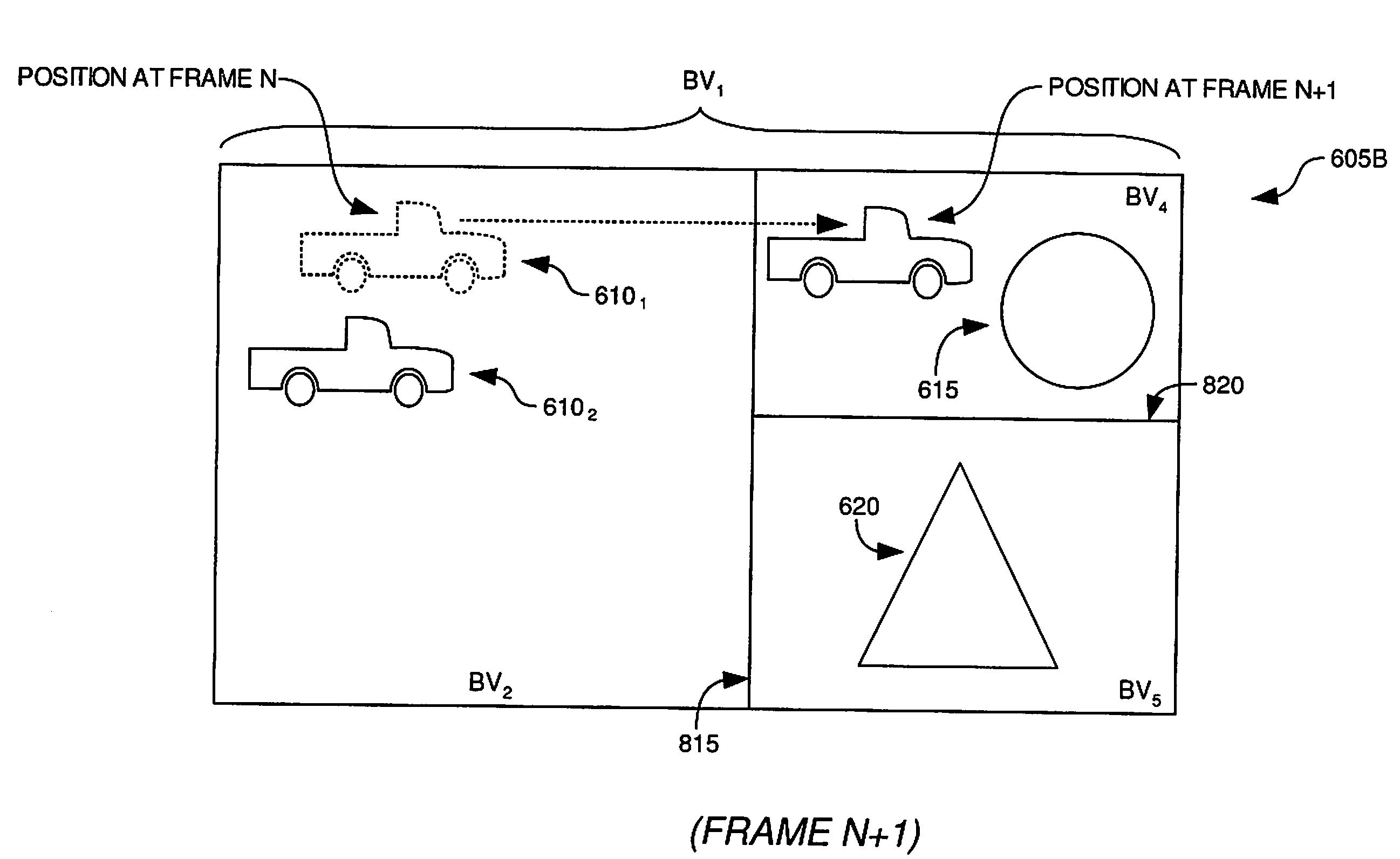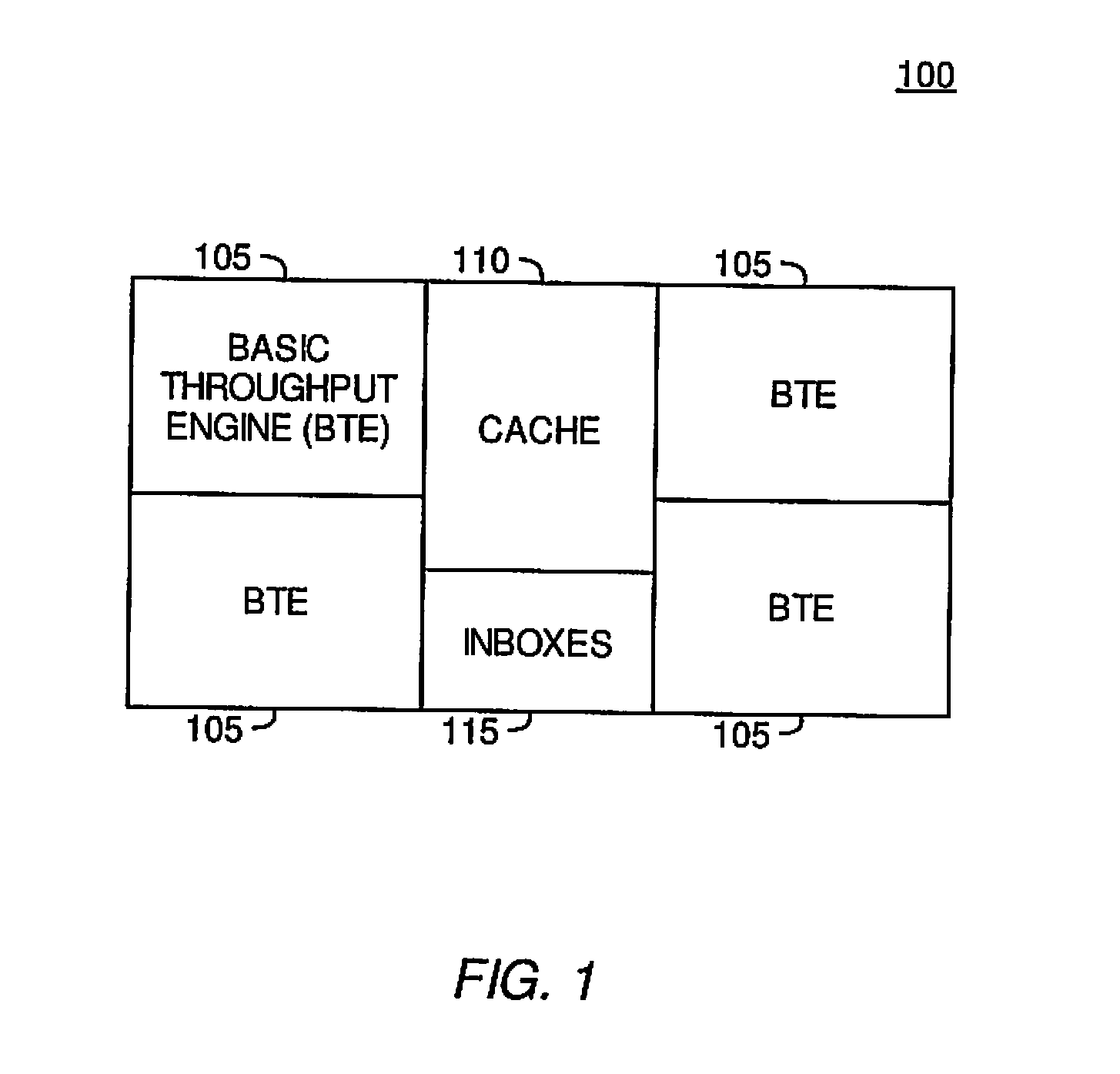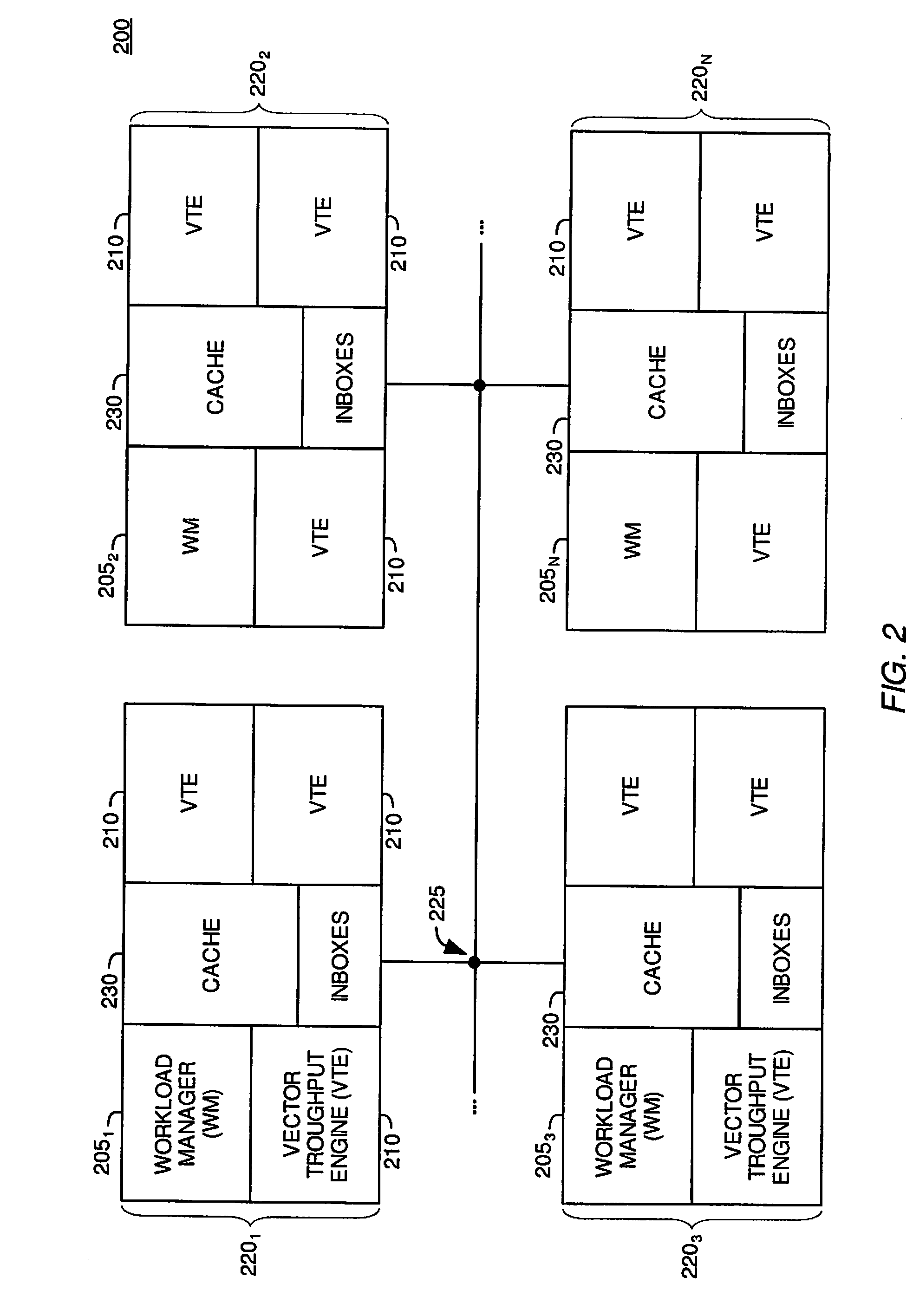Integrated Acceleration Data Structure for Physics and Ray Tracing Workload
a workload and acceleration data technology, applied in the field of computer processing, can solve the problems of rasterization suffering from some drawbacks, modern monitors display images, and use relatively low amounts of computational power
- Summary
- Abstract
- Description
- Claims
- Application Information
AI Technical Summary
Problems solved by technology
Method used
Image
Examples
Embodiment Construction
[0026]Embodiments of the invention provide an integrated acceleration data structure which may be used by a physics engine and an image processing system. According to one embodiment of the invention, an integrated acceleration data structure may be formed by creating an initial or upper portion representing a spatially oriented hierarchy of bounding volumes which partition a three dimensional scene, and a second or lower portion representing objects located within the three dimensional scene. The upper portion of the integrated acceleration data structure may be connected to the lower portion of the integrated acceleration data structure by branches from nodes defining bounding volumes within the three dimensional scene, wherein the bounding volumes encompass objects located within the three dimensional scene. According to embodiments of the invention, by creating an integrated acceleration data structure, only one data structure may be necessary for a physics engine to perform cal...
PUM
 Login to View More
Login to View More Abstract
Description
Claims
Application Information
 Login to View More
Login to View More - R&D
- Intellectual Property
- Life Sciences
- Materials
- Tech Scout
- Unparalleled Data Quality
- Higher Quality Content
- 60% Fewer Hallucinations
Browse by: Latest US Patents, China's latest patents, Technical Efficacy Thesaurus, Application Domain, Technology Topic, Popular Technical Reports.
© 2025 PatSnap. All rights reserved.Legal|Privacy policy|Modern Slavery Act Transparency Statement|Sitemap|About US| Contact US: help@patsnap.com



